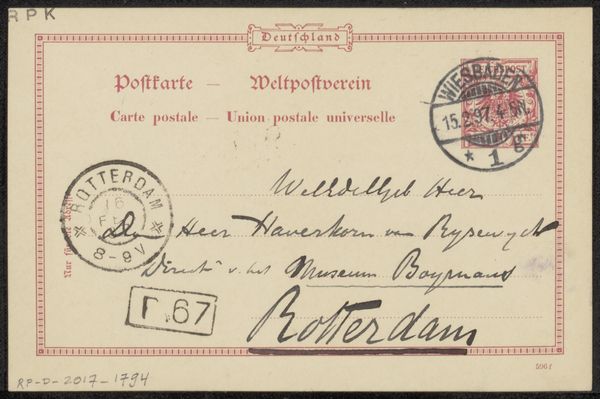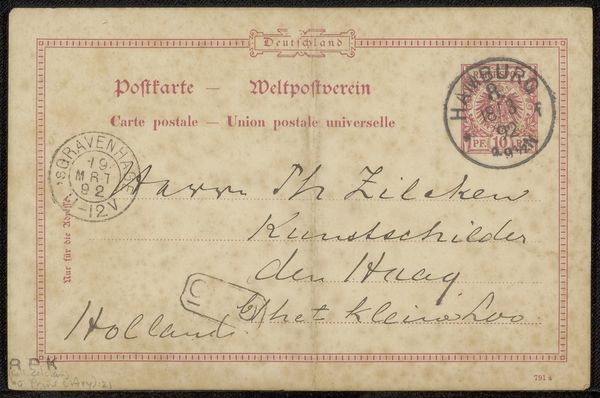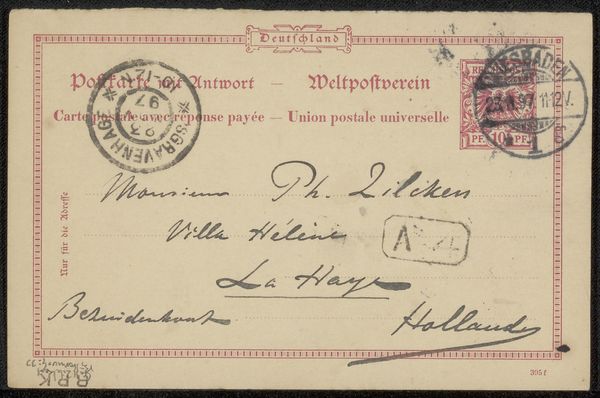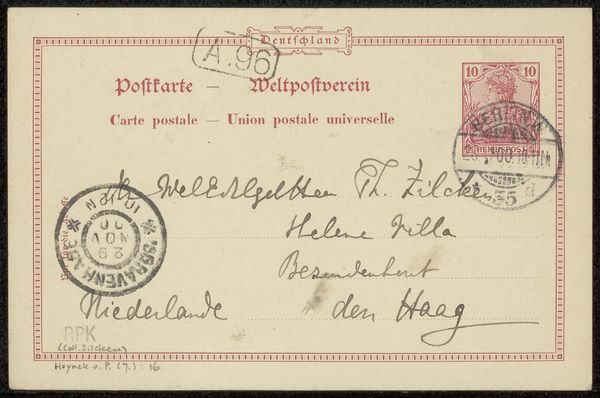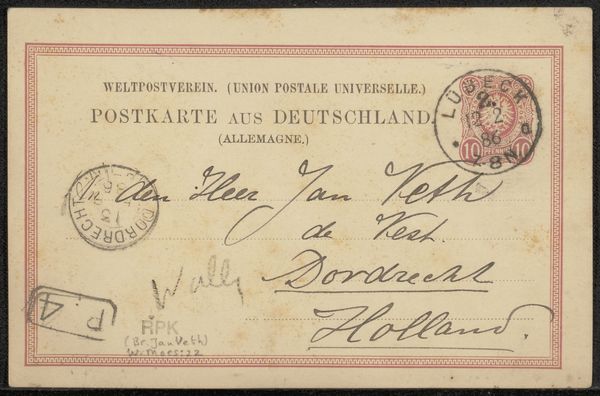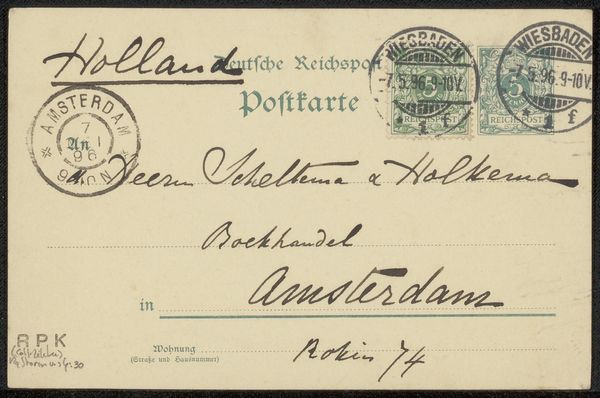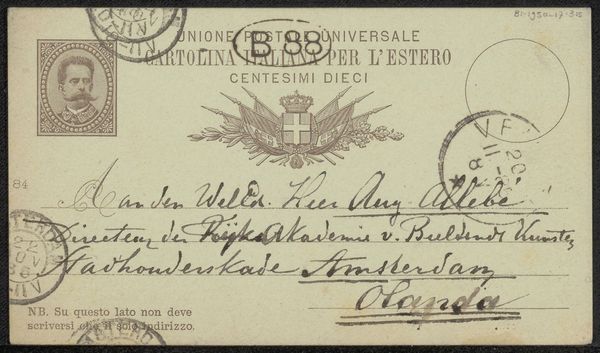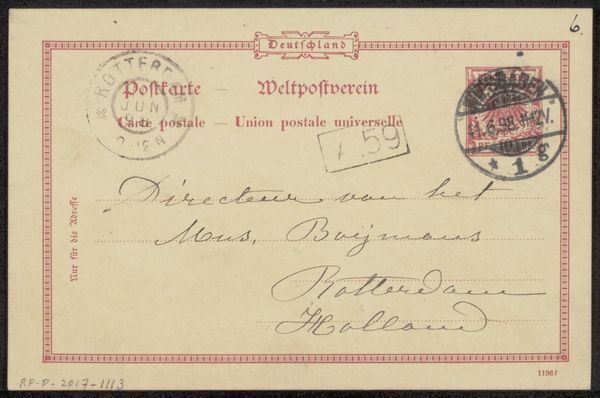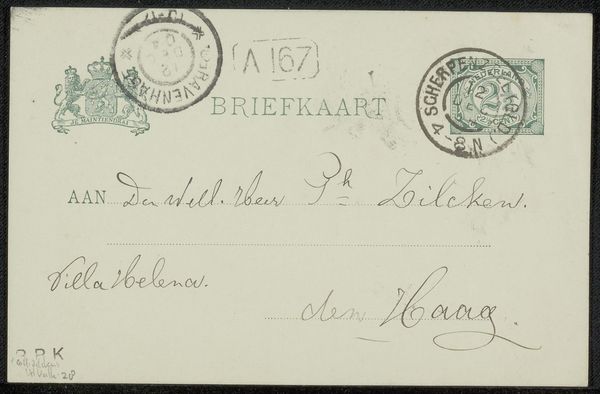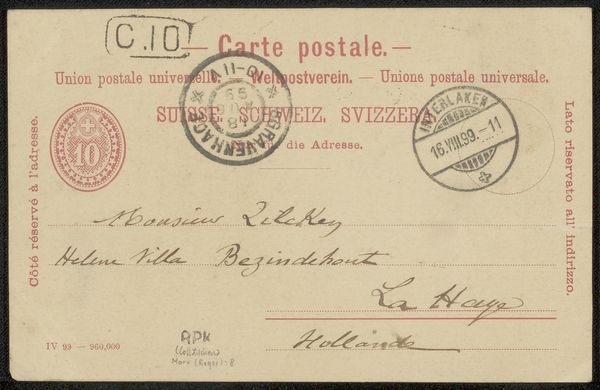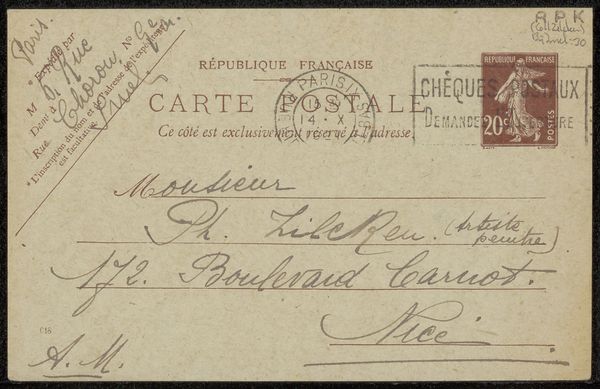
mixed-media, print, paper, photography, ink, pen
#
aged paper
#
mixed-media
#
hand-lettering
# print
#
old engraving style
#
hand drawn type
#
hand lettering
#
paper
#
photography
#
personal sketchbook
#
ink
#
hand-drawn typeface
#
pen work
#
sketchbook drawing
#
pen
#
handwritten font
Copyright: Rijks Museum: Open Domain
Curator: Here we have “Briefkaart aan Philip Zilcken,” a mixed-media piece, most likely from 1896, by Carel Nicolaas Storm van 's-Gravesande. Editor: The aged paper gives it a poignant, historical feel right away, doesn't it? It is intimate, like discovering someone's private correspondence. Curator: Exactly. And the postcard format reveals so much about the constraints of communication at the time. Note the careful hand-lettering, practically a craft itself. What do you make of the blend of photographic and graphic elements? Editor: I think the layered approach here is important. It showcases not just artistic skill, but a kind of material ingenuity – making the most of the postal system. Each stamp becomes part of a story about circulation and value. How this small paper had such a long journey and survived, shows you how postal services shaped cultural exchange then. Curator: That resonates deeply. We often overlook how crucial postal services were, literally connecting people and enabling creative dialogue. The address itself suggests a network—Zilcken, presumably another artist, situated within a web of patronage and exchange in Europe. Editor: Indeed, it is material history right in our hands. It points back to production, labor, the physical and institutional processes shaping artistic creation itself. We see the residue of use. The act of writing. The hand. These little remnants speak volumes. Curator: Absolutely. Studying pieces like this shifts our understanding of art. Not just static objects hanging in galleries, but vibrant evidence of broader social, economic and political dynamics. It lets us re-evaluate how we present material history and the stories we want to share with a broader audience. Editor: A single postcard prompting a wealth of conversation. It reminds you that everyday objects often hold as much historical significance as grand statements in sculpture or painting.
Comments
No comments
Be the first to comment and join the conversation on the ultimate creative platform.

